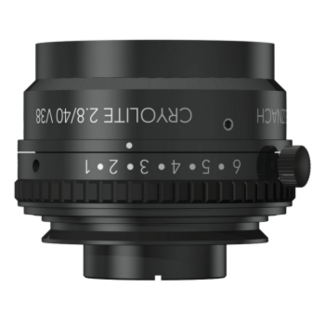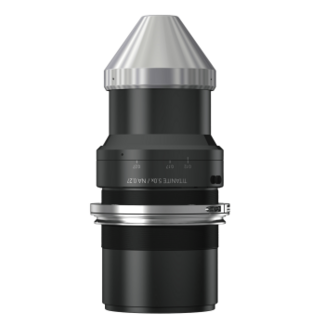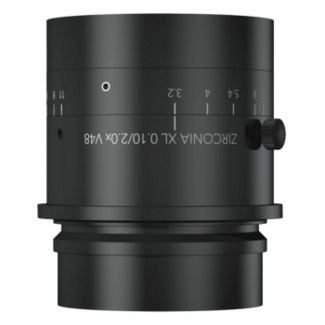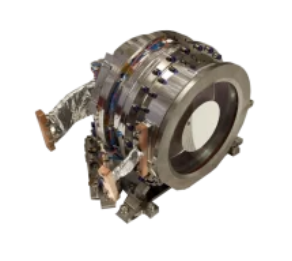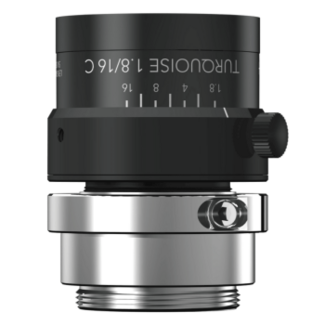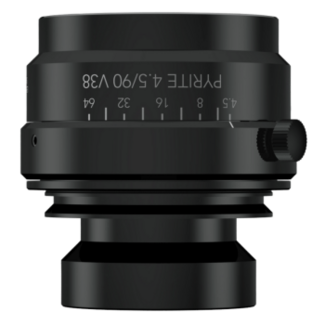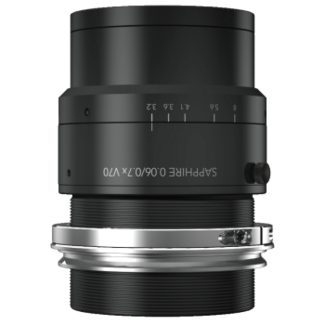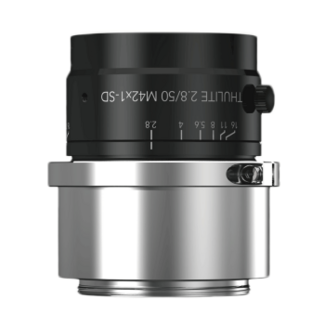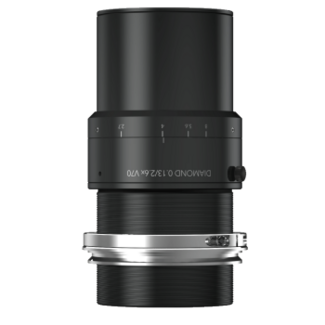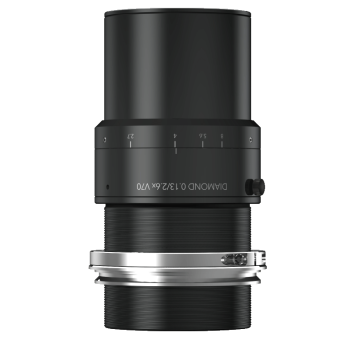Schneider Optics - DIAMOND Line Scan Lenses
- Extremely high resolution down to 3.5µm pixel size
- Image circle: 62.5 mm - 82 mm
- Optimized for specific magnifications
- 5 magnifications available: 2.6x - 5.2x
- Versions with beamsplitter available
- Best azimuth marking
- V-Mount for easy installation
The high-magnification DIAMOND lens series from Schneider Kreuznach is designed to meet the specific requirements of high-resolution imaging in professional environments. These magnification lenses are optimized for 12k/5µm (DIAMOND XL: 16k / 5µm) line scan sensors. These lenses support resolutions down to 16k/3.5µm pixel size and are compatible with a wide range of line scan and large area sensors, including those up to 82mm diagonal. The DIAMOND series is designed to provide flexibility with magnifications from 2.6x to 5.2x to meet a variety of industrial, medical and scientific imaging requirements. The installation and operational flexibility of the diamond lenses is further enhanced by the V70/V90 mount interface, which allows for easy mounting and rotation of the lens to the best azimuth. This design consideration ensures that users can achieve optimal image quality in applications ranging from manufacturing process control to detailed medical imaging.
From PCB inspection to medical Imaging: The versatile power of DIAMOND lenses
In practice, diamond lenses are used in a wide range of technical disciplines. They are essential for detecting early production defects in display manufacturing, ensuring precision in printed circuit board inspection, and enabling comprehensive automated optical inspection (AOI) in component manufacturing. In addition, their performance is critical in line scan imaging and medical applications where high-resolution and accurate imaging is paramount.
DIAMOND lenses: Transforming Fluorescence Light Sheet Microscopy
The DIAMOND lens series represents a significant advancement in fluorescence light sheet microscopy and offers a solution uniquely tailored to the challenges of modern medical research. The unique feature of these lenses - their large image circle and high magnification - allows the use of cameras with large sensors. This integration provides many benefits, including the ability to capture very high resolution images and the ability to analyze larger specimens in a single image (in the µm range). Traditionally, examining "large" samples required the laborious process of stitching together multiple images to create a complete view. DIAMOND lenses eliminate this need. This breakthrough has been recognized and adopted by leading research organizations, including the Allen Institute, which is using these lenses to push the boundaries of biological research. For an in-depth look at how our lenses are being used in groundbreaking medical research, we invite you to read their aritcle detailing their experience with the DIAMOND lens series.
Discover the compatibility of DIAMOND lenses with top sensor brands
Check out the optimal sensor compatibility for DIAMOND lenses. Our selection includes a variety of compatible sensors from leading manufacturers such as OnSemi, GPixel, ams. Improve your imaging efficiency and accuracy with the ideal lens-sensor combination.
Lens Models
|
Lens |
Magnification |
Numerical Aperture |
Max. Sensor Size |
Mount |
Special Feature |
Datasheet |
|---|---|---|---|---|---|---|
|
2.6x |
0.12 |
62.5 mm |
V70-Mount |
Beamsplitter |
||
|
2.6x |
0.13 |
62.5 mm |
V70-Mount |
- |
||
|
3.33x |
0.16 |
82 mm |
V90-Mount |
Beamsplitter |
||
|
3.5x |
0.16 |
62.5 mm |
V90-Mount |
Beamsplitter |
||
|
3.5x |
0.17 |
62.5 mm |
V90-Mount |
- |
||
|
5.0x |
0.21 |
82 mm |
V70-Mount |
Beamsplitter |
||
|
5.2x |
0.22 |
62.5 mm |
V70-Mount |
- |
||
|
5.2x |
0.22 |
62.5 mm |
V70-Mount |
Beamsplitter |
Didn't find the right fit?
If these models don’t meet your requirements or specifications, explore our complete lens portfolio using our lens selector.
Applications & Markets of the DIAMOND lenses
Automated (FPD) inspections can detect and correct defects in displays at an early stage.
PCB inspection is the checking of printed circuit boards for faults and deviations to ensure that they meet the requirements.
The camera is placed along a production line that quickly scans along the movement of the product.
Ideal for light sheet microscopy, the large image circle accommodates cameras with big sensors, enabling high-resolution imaging of "larger" objects for detailed inspection.
Environmental Facts of the DIAMOND lenses
Our DIAMOND line scan lenses are tested to DIN standards to ensure they meet stringent environmental requirements. These tests check the durability of the line scan lenses, their resistance to temperature changes and their ability to withstand shock tests and sinusoidal vibration. This ensures that the industrial lenses are up to the task in demanding industrial applications such as machine vision or automated optical inspection, providing consistent performance and reliability over time.
|
Slow Temperature Cycling |
Damp Heat, Cyclic |
Shock Testing |
Sinusoidal Vibration |
|---|---|---|---|
|
-25°C - +50°C 5 cycles a 12h DIN ISO 9022-2-14-03 -1 |
-23°C - +40°C 80% - 95% rel. humidity DIN ISO 9022-2-16-01-1 |
50 g / 11 ms 18 shocks DIN ISO 9022-3-30-06-1 |
2 g 10-500 Hz DIN ISO 9022-3-36-04-1 |
Optical Filters
By protecting the lens, eliminating unwanted wavelengths and enhancing contrast, optical filters improve the image quality of your lens in industrial applications.
>>>You may need an optical filter as well? Click here for more information
